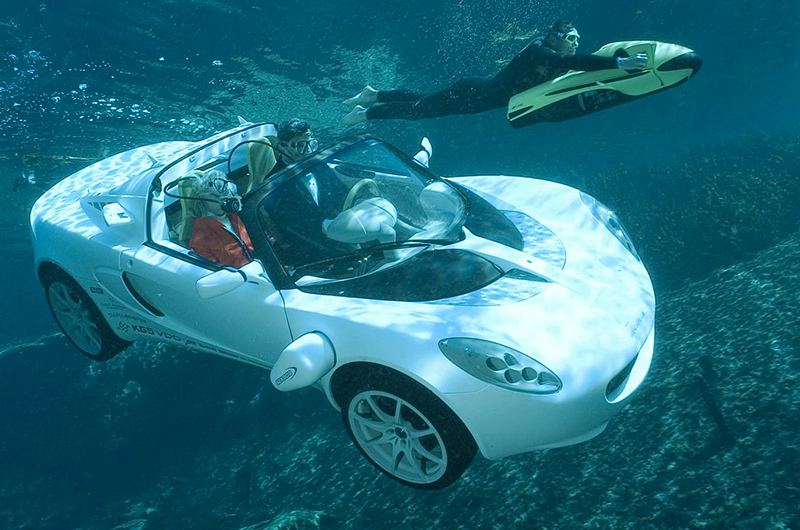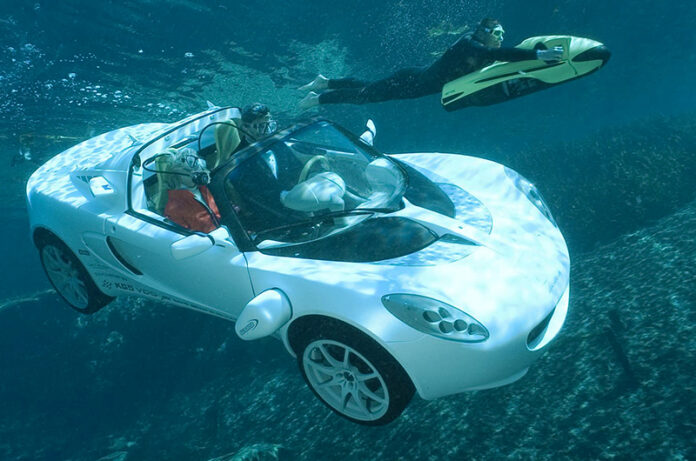Amphibious automobiles are a sight to behold, and the few that are out there are totally one of a kind; despite the fact that there aren’t too many of them, they are a very interesting sight to see.
Imagine this: you have just pulled into the parking lot of the lake near your home, towed your boat and trailer up to the launch area, and are now getting ready to enjoy some time on the water.
You are startled as a car that has just pulled up next to you suddenly drives straight down the ramp and into the lake.
It comes as a surprise, but instead of going down to the bottom of the lake, the car floats on top of the water and starts moving away from the shore just as a regular boat would.
What’s the deal? As surprising as it may sound, there is such a thing as an amphibious car, which, contrary to what one might assume from the name, is capable of performing the duties of a conventional automobile in addition to those of a boat when it is submerged in water.
Amphibious automobiles are a sight to behold, and the few that are out there are totally one of a kind; despite the fact that there aren’t too many of them, they are a very interesting sight to see.
Prodrive Watercar
According to its American manufacturers, this is the world’s fastest amphibious car that you are about to see. Out on the water, it is capable of reaching 43 miles per hour because to its 3.7-liter V6 engine, and if you happen to have a pair of water skis with you, it can also easily tow someone behind it. Note that training is not included in the price.
And that’s not all; you can also use it to make your regular trip to the grocery store, which is a huge time saver. Prodrive obtained this particular model from the California-based company Watercar, imported it into the United Kingdom, and then began the process of bringing it into compliance with UK road regulations so that it is now capable of reaching speeds of up to 80 miles per hour. Not that you’ll ever want to, especially after reading the recent review that our very own Captain Kew penned for it.
Because Watercar has recently declared bankruptcy (some might say they’re all at sea…), Prodrive is unable to get their hands on any more, which makes this a very unique one-off vessel. At the moment, it can be purchased for the price of £165,000; however, those who are interested will need to act quickly.
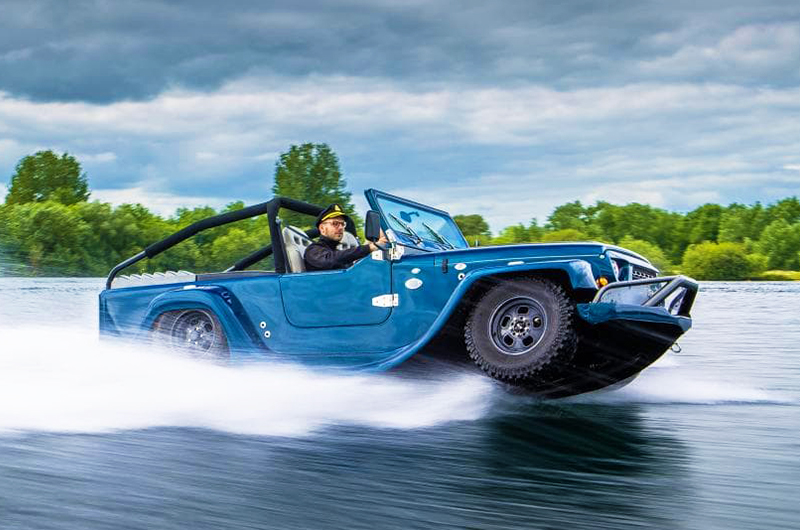
Project Sea Lion
Project Sea Lion, which should not be confused with Operation Sea Lion (you can look it up on Google, kids), was an endeavor that lasted for six years and aimed to compete for the title of the world’s fastest amphibious car on land and water. It wasn’t quite good enough to be included in the record books, but props for trying!
Marc Witt, the inventor of the vehicle, stated that it was built from TIG-welded aluminum and featured a Mazda 13B rotary engine. He also stated that it had the potential to reach speeds of up to 180 miles per hour on land and 60 miles per hour in water, provided that it was operated by skilled drivers and that the engine was upgraded. Because of this, it is, coincidentally enough, also a good deal quicker than its namesake (25mph, according to our resident zoologist).
Marc Witt, the inventor of the vehicle, stated that it was built from TIG-welded aluminum and featured a Mazda 13B rotary engine. He also stated that it had the potential to reach speeds of up to 180 miles per hour on land and 60 miles per hour in water, provided that it was operated by skilled drivers and that the engine was upgraded. Because of this, it is, coincidentally enough, also a good deal quicker than its namesake (25mph, according to our resident zoologist).
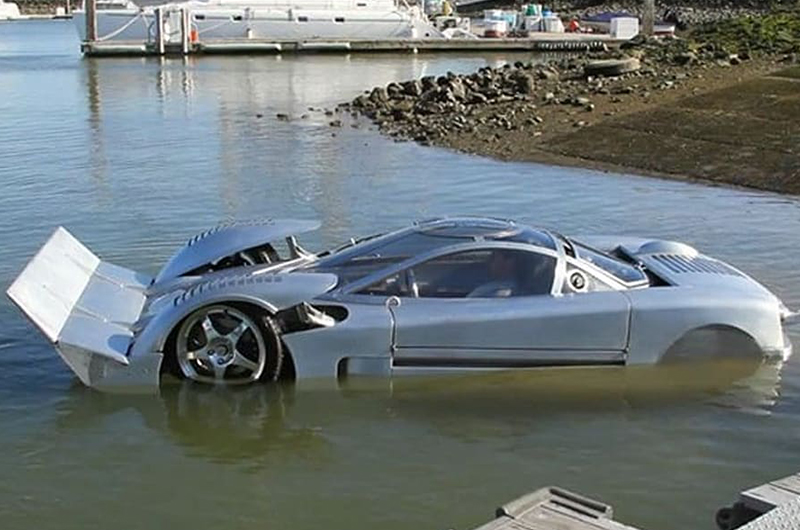
Gibbs Aquada
In the year 2004, the Gibbs Aquada, which was piloted by Richard Branson, set a new record for the quickest crossing of the English Channel by an amphibious vehicle with an official time of one hour, forty minutes, and six seconds.
And despite the fact that it may look like a crossover between a monster truck and a Mazda MX-5, in actuality, the only thing it has in common with the sports car is its headlights.
It has a three-seat arrangement, similar to that of the McLaren F1, with the driver situated in the middle and passengers seated on either side. The Aquada gets its power from a 2.5-liter Rover V6 engine, which allows it to reach speeds of over 100 miles per hour on land and over 30 miles per hour on water.
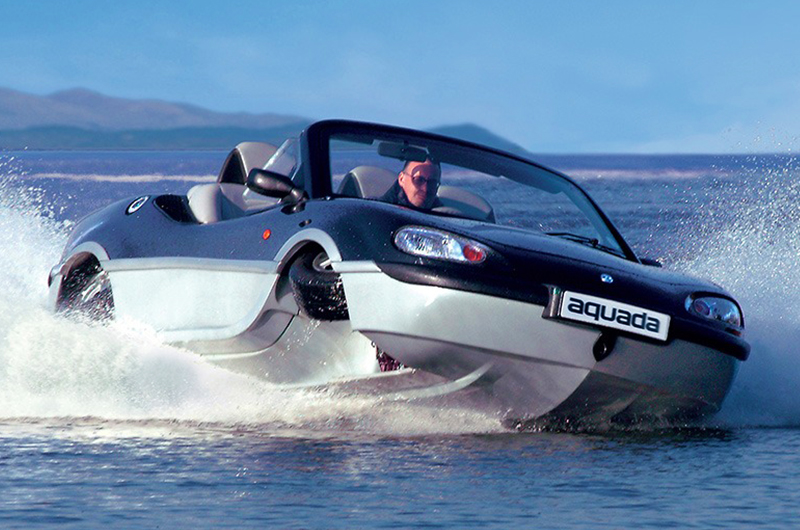
Dutton Surf
It’s no secret that we have a soft spot in our hearts for the Suzuki Jimny; in fact, we shed a tear when it was banned from sale in Great Britain a year ago because of strict emissions laws. Now that we know the Jimny can go on land and sea, the only issue that remains is: where do we sign?
All of this is made possible by Dutton, a company that formerly produced kit cars. The theory is straightforward: either you purchase the conversion kit and perform the work on your own, or you provide a donor Jimny and they will perform the work for you. The aforementioned operation entails transferring the mechanical components of the Jimny into the new body, which is made of stainless steel and plastic and comes equipped with a water jet propulsion system.
All of this is made possible by Dutton, a company that formerly produced kit cars. The theory is straightforward: either you purchase the conversion kit and perform the work on your own, or you provide a donor Jimny and they will perform the work for you. The aforementioned operation entails transferring the mechanical components of the Jimny into the new body, which is made of stainless steel and plastic and comes equipped with a water jet propulsion system.
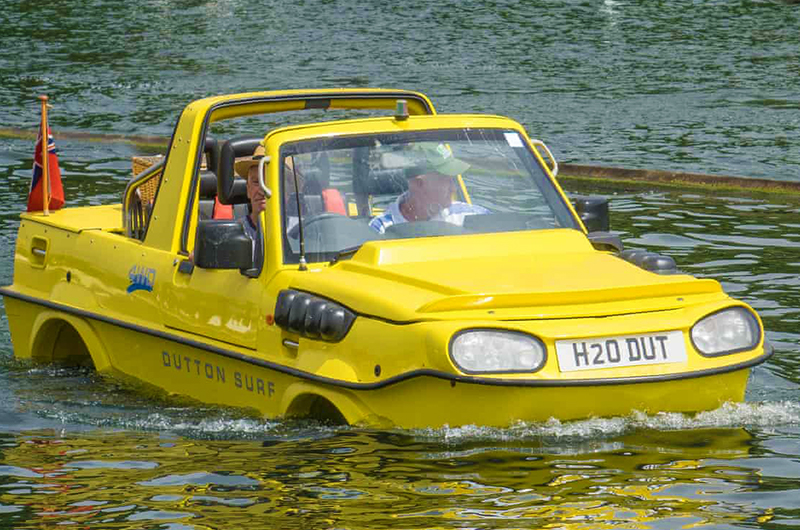
Rinspeed sQuba
This is not your average Lotus Elise by any stretch of the imagination. The Lotus Esprit road-going submarine that appeared in the 1977 film The Spy Who Loved Me served as inspiration for Rinspeed founder and CEO Frank M. Rinderknecht to come up with the idea that he, too, wanted to build a submarine that could travel on roads.
It was more of a submarine than a boat, just like 007’s, in terms of its design. It is able to dive to a depth of ten meters, is propelled by a pair of electric-powered propellers, and has the capability to keep passengers alive by providing them with breathing equipment similar to that used in scuba diving. Since there is no indication of wetsuits in the promotional pictures, we believe that you should bring a change of clothes with you.
To get away from those unpleasant enemies, however, might have been difficult given that the maximum speed you can reach underwater is only 2 mph. On the road, where it’s legal, the sQuba may reach speeds of up to 75 miles per hour.
